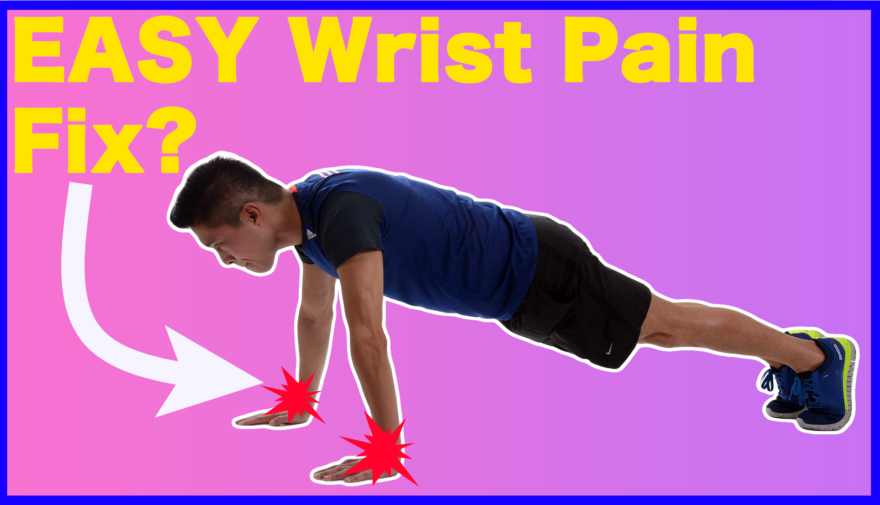Table of Contents
I’ll give you a hand (literally)
It’s not uncommon for wrists to be uncomfortable during push-ups, and there can be many reasons why this occurs–ranging from reduced wrist motion or anything else up the chain.
But there is one factor that is rarely discussed.
If you can address this area, that wrist of yours may feel AMAZING the next time you do push-ups.
In today’s post, I’ll go over the biomechanics behind this easy push-up fix, and how to execute it!
Check out the video, post, and podcast below to learn about it.
Push-up biomechanics
The push-up start position requires the ability to attain several different positions:

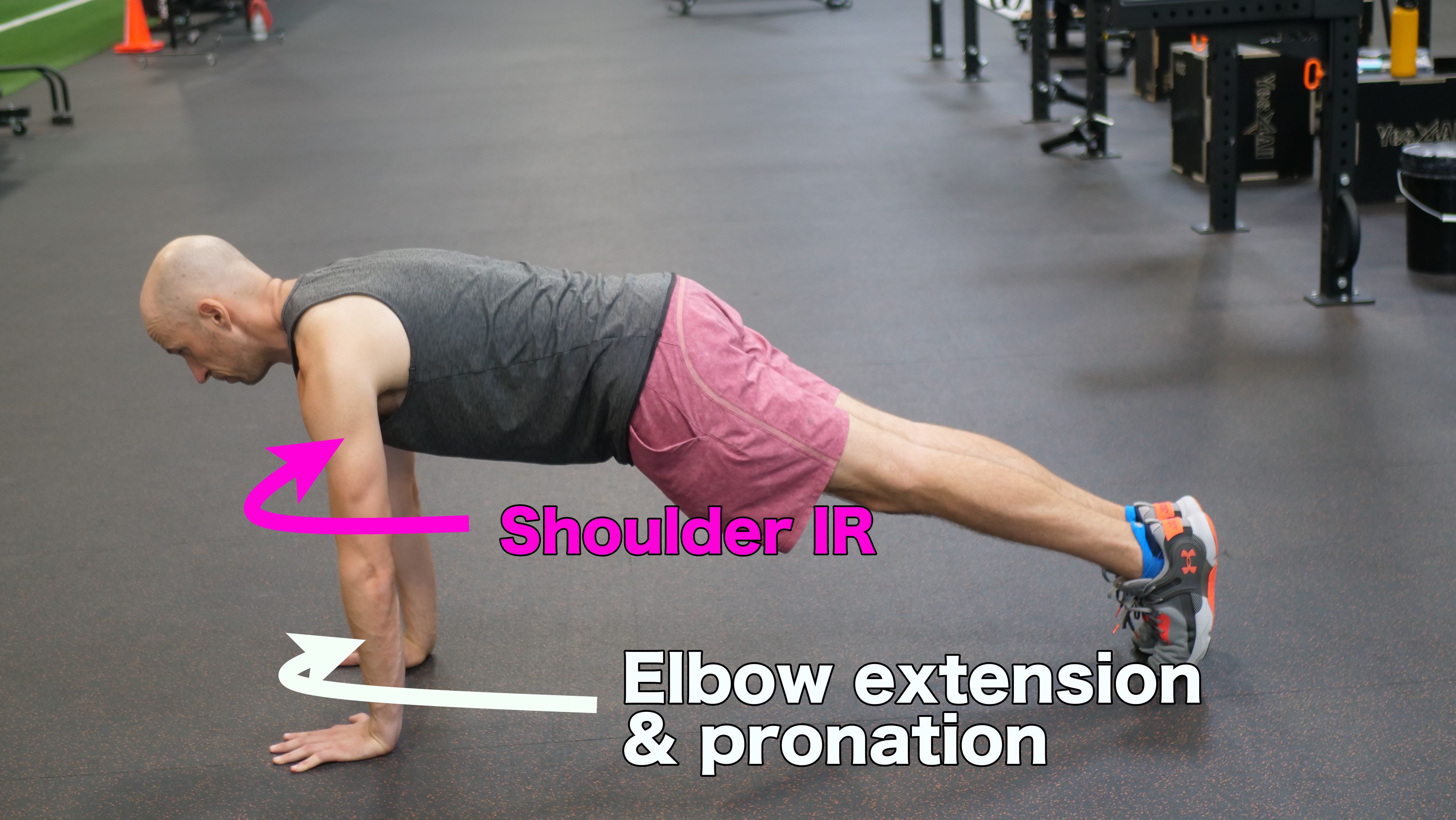
- Lower ribcage must be exhaled and come backward
- Chest stays parallel to the floor
- Slight upper cervical extension with lower cervical flexion
- Scapula protracted (coming forward)
- Shoulder in slight internal rotation
- Elbow in extension and pronation
- Wrist in extension and radial deviation
Overall, the bias in the arm is to produce internal rotation and pronation for a pushup.
If one cannot coordinate all of these positions, it’s not uncommon to have increased pressure built up in the wrist, leading to discomfort in the pushup.
But there is one area that most people rarely look at that can influence these actions to occur:
Hand posture.
How does hand posture influence push-up positioning?
The hand must be able to attain a particular shape in order to drive internal rotation/pronation, much like the foot does when walking. This shape is especially so as the wrist extends, which deficit here is a common reason for overloading the wrist.
In order for internal rotation to occur in a pushup, the hand must:
- Flatten the hand arch (hand pronation)
- Contact the ground through the pisiform and second metacarpal (MCP)
The hand should look like this:
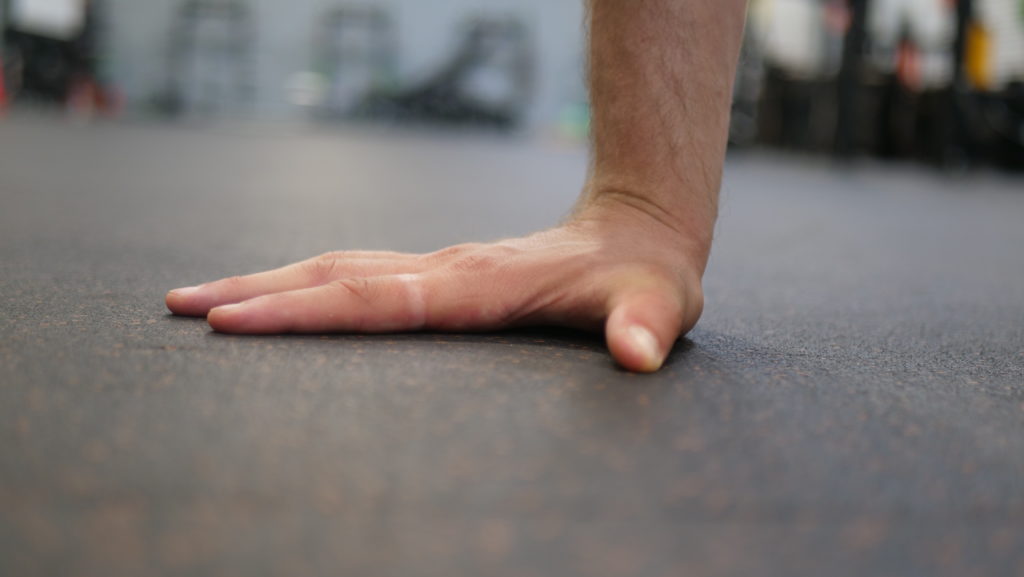
With pressure distribution on the following points:
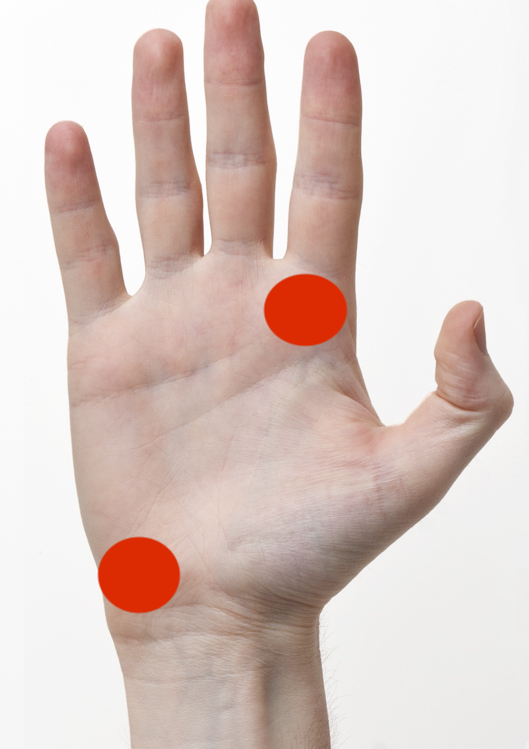
Surprisingly, many people do not have the ability to contact these points on the ground. What you’ll often see is the fingers gripping the ground with the 2nd MCP hovering in the air:
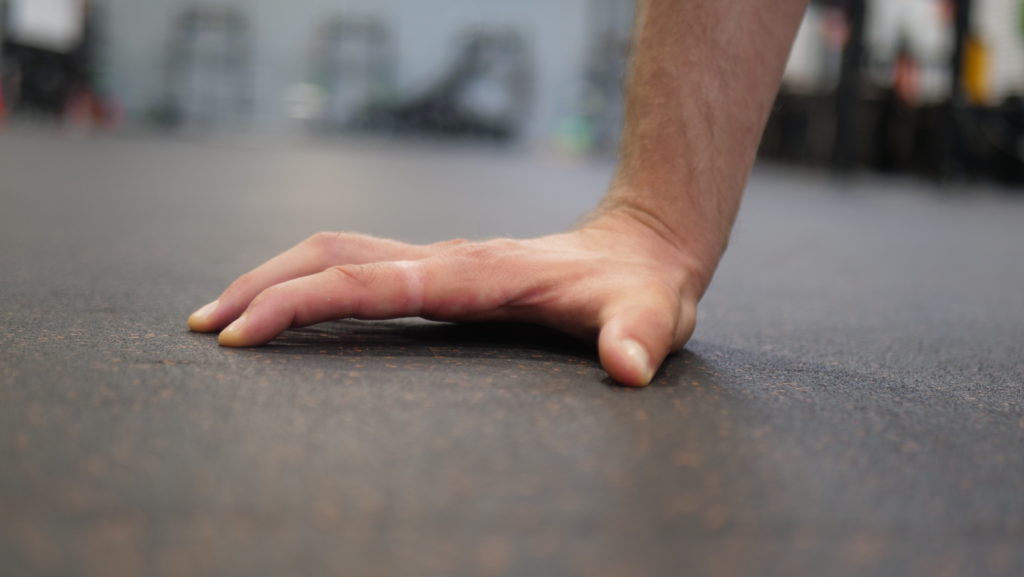
Or the fingers not really contacting the ground that much, with all of them and the 2nd MCP hanging in the air
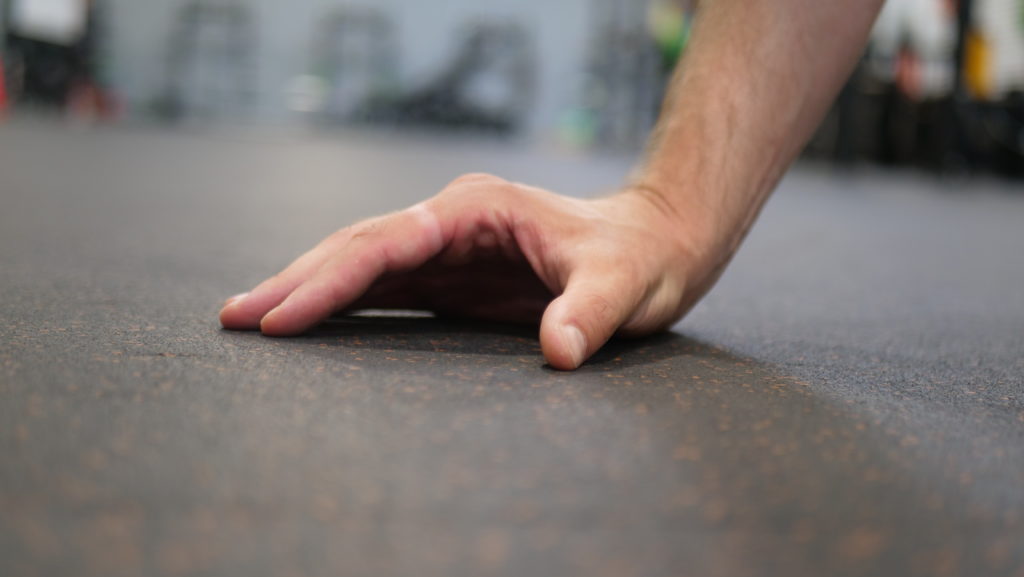
Or the 2nd MCP contacting the ground, but the fingers hyperextended:
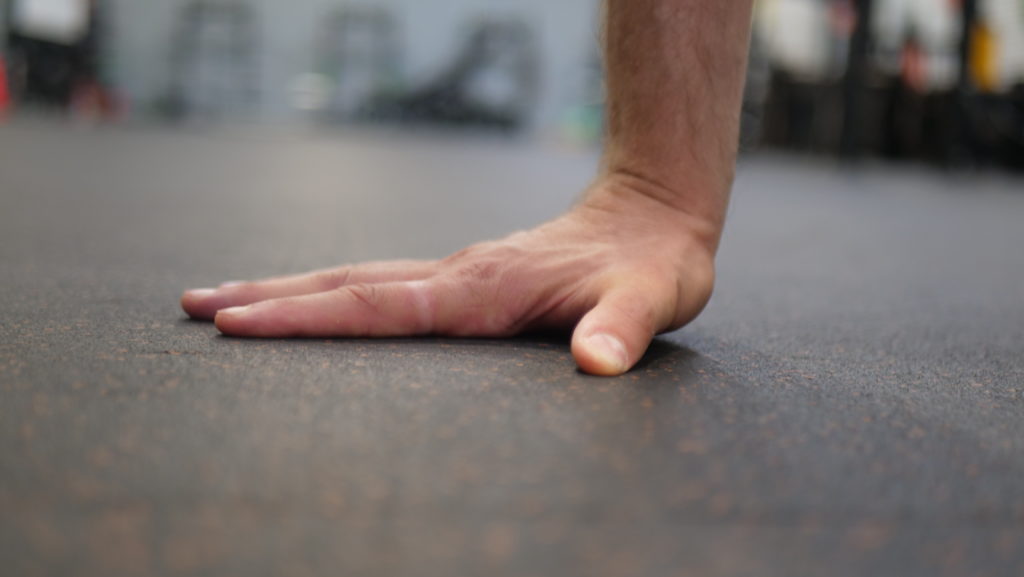
Or you’ll see the medial hand border (pinky-side) coming up off the ground:
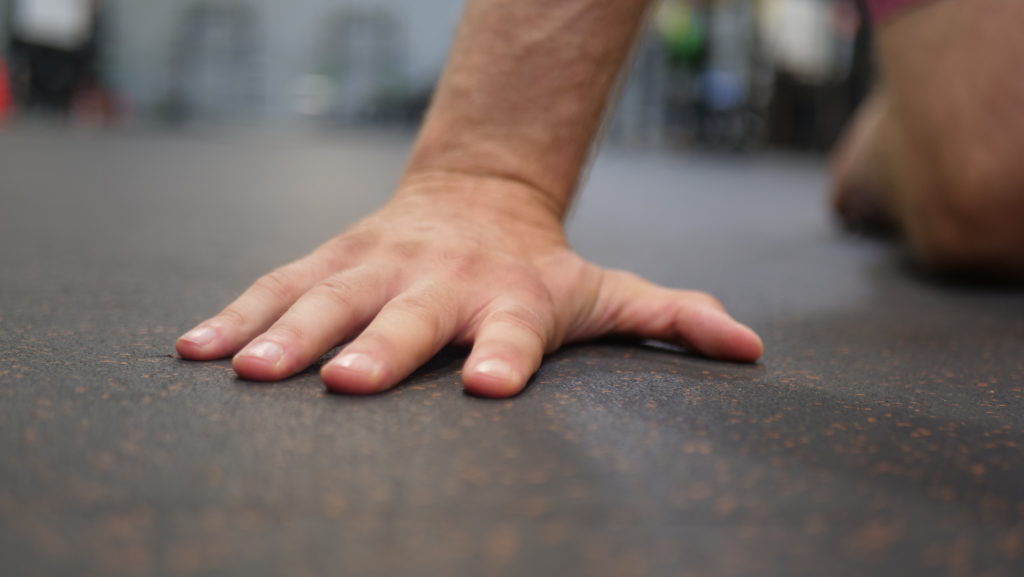
Any of these issues indicate an inability to create pronation through the hand, which will limit internal rotation capabilities up the rest of the arm.
If you can’t contact these points without cheating, there is one VERY simple fix that should help.
All you need is a stack of post-it notes.
Addressing hand posture for pain-free push-ups
Adding post-it notes underneath the hand heel does 2 things:
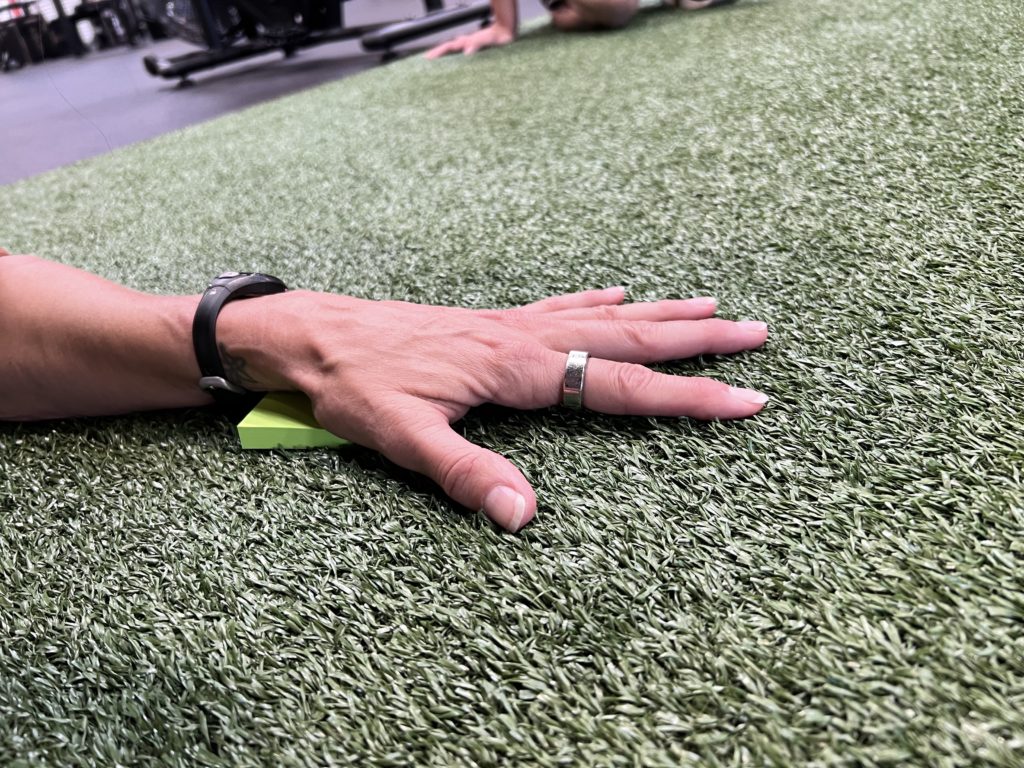
- Reduces the distance traveled between the wrist base and fingers touching the ground, allowing the hand to better flatten
- Transfers weight more toward the front of the hand, encouraging 2nd MCP contact
The combination of these two factors often allows the hand to better pronate without any of the cheats above.
From here, you can drive specific drills to encourage this hand posture.
The easiest position will be performing this activity on elbows, focusing on contacting the pisiform and 2nd MCP:
If you got this position down pat, you can run the same drill in quadruped:
Then lastly, progress to a pushup hold or even a full pushup, emphasizing the same contacts:
Sum up
While hand posture may not be the cure-all for push-ups feeling great, it’s an often overlooked area in wrist discomfort during this awesome upper body move.
To recap:
- The body must have adequate internal rotation capability to perform a pushup without overloading the wrist
- Hand pronation is a necessary piece of this internal rotation production
- To pronate the hand, weight must be distributed between the pisiform and 2nd MCP
- If the above cannot be done, slightly elevating the wrist base can better allow the hand to flatten
What other exercises are you struggling with that you need help with? Comment below and let the fam know!

